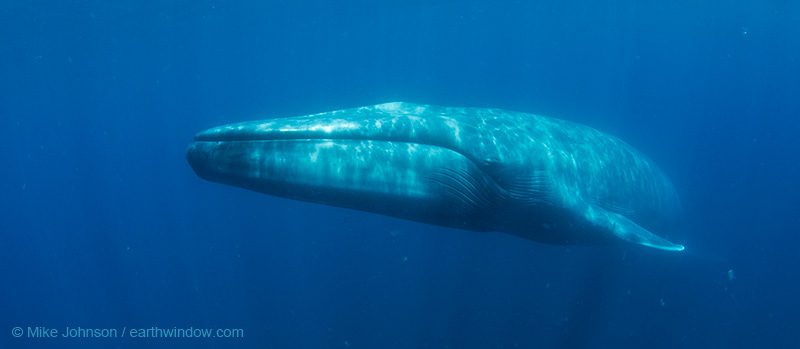November 17, 2015
Sophisticated Blue Whale Feeding Patterns Unearthed by Scientists
BY: Brianna Elliott
There’s no denying that the oceans house some of the world’s most spectacular creatures—like the ghoulish goblin shark, the translucent glass squid and the striking Atlantic bluefin tuna that can cut through the oceans at a remarkable 45 miles per hour. But did you know that in addition to these peculiar animals, it’s also home to the largest creature to ever live on Earth?
The mighty blue whale (Balaenoptera musculus) reaches a staggering 110 feet long—about the length of a basketball court—and can weigh up to about 330,000 pounds. With the exception of ice-covered areas of the Arctic, blue whales are distributed throughout the world’s oceans and migrate across vast distances from polar feeding grounds to tropical calving grounds. Interestingly, these massive marine mammals aren’t predatory, and instead filter feed on tiny krill as their main prey source.
Until recently, scientists understood very little about how these gentle giants grew to such sizes as filter feeders. Now, new research show that it’s due to the remarkable efficiency of their feeding patterns, according to a recent study out of NOAA, Oregon State University and Stanford University published earlier this month in Science Advances.
“For blue whales, one of our main questions has been: How do they eat efficiently to support that massive body size,” Elliott Hazen, research ecologist with NOAA Fisheries’ Southwest Fisheries
Science Center and lead author of the research, said in a press release. “Now we know that optimizing their feeding behavior is another specialization that makes the most of the food available.”
Blue whales have long been thought to aimlessly feed on krill as they swam about, but this new research shows that their foraging patterns are much more tactful. Instead, they optimize their energy efficiency by only lunging for krill when this prey source is located nearby in dense groups. To reach these conclusions, the scientists tagged a subset of blue whales and compared their behavior to another group of previously tagged blue whales, as well as acoustic monitoring of krill density.
Because these whales are deep divers, purposefully lunging for prey enables them to both conserve oxygen and maximize their energy from krill consumption every dive. If, on the other hand, these whales were aimlessly foraging for krill, they would consequently waste oxygen and use up more of their energy source. Thus, these sophisticated foraging patterns optimize energy efficiency.
“Increasing understanding about blue whale foraging strategies, will allow scientists to develop more informed conservation plans” says Oceana marine scientist Ingrid Biedron. “This study is an important step towards improving management of this endangered species.”

Blue whales are listed as endangered under both the Endangered Species List and IUCN Red List of Threatened Species. Blue whales were severely decimated by commercial whaling activity around the turn of the 20th century, and scientists say that their population has declined by about 70 to 90 percent over the past century, according to the IUCN. Now, scientists estimate that about 500 whales remain in the North Atlantic, 2,500 in the North Pacific and about 2,000 individuals in the Southern Hemisphere. Other threats today include vessel strikes, fishing interactions, anthropogenic noise, pollution and more, according to NOAA.
Check out Oceana’s Ocean Animal Encyclopedia to learn more about blue whales and other marine creatures.



